6. The Last Emperor (1987) – Bernardo Bertolucci
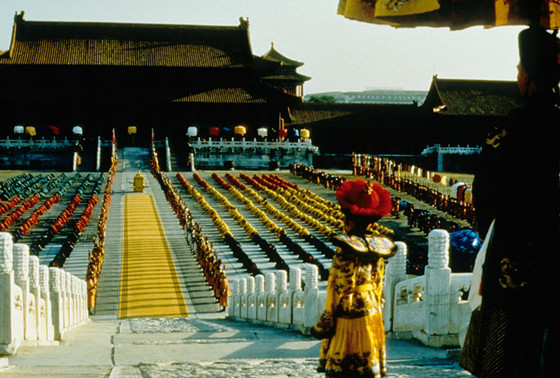
A film of recent history as Bertolucci takes a look at Puyi’s life in the 20th century as the title figure – the last emperor of China. In his fashion along with Vittorio Storaro’s cinematography, we enter a stunning kingdom of colors, sets, and design, all within the upheaval of China over the course of several decades.
Since the Italian master is in foreign territory, he uses Peter O’Toole as almost a surrogate as the real life tutor of Puyi through the ages of leading his country. However, the question at hand is how does this make us look at Chinese history differently than one already does? It’s simple – we don’t see a astute, kingly emperor, we see a little strange boy growing up who just happens to be the emperor of China.
Throughout the lavish film and specifically in the later years, one could expect to see the China that still exists under communist rule. But Bertolucci shows us the maturing of this confused little one in painterly composition, aided by Ryuichi Sakamoto’s score.
Bertolucci has always made us look at things differently, even at the May 1968 events in France in “The Dreamers,” but maybe since he was so far from his realm and native Italy or even Europe, he was able to show a truth and opposing side to the China that has been steeped in mystery or privacy. He instead embraced it all through a little boy.
7. Ben Hur (1959) – William Wyler
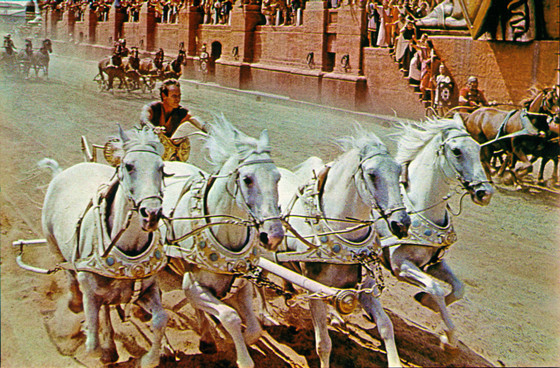
The biggest scale of a film on this list was Wyler’s resurrection of the Roman Empire. Dozens of films after, such as “The Fall of the Roman Empire” to “Gladiator” have captured a sort of magic about one of the greatest eras in human history, but Wyler went all in and certainly succeeded.
From hundreds of animals and thousands of extras in the widest screen format, one could forget about the actual story of it all. The story is fairly simple, as Charlton Heston is sold into slavery as a Jewish prince and comes back for revenge.
As said before, since the story is straightforward, Wyler could deviate toward subjects such as Catholicism or Judaism, leprosy, chariot races, or an overall look at an ancient time. No other film on this scale could portray what ancient Rome looked like and especially at a 2:76 ratio, it is extremely difficult not to let the eye wander around in the frames of this world at more than three and half hours of film.
Though it’s mostly known for it famous chariot race, one cannot forget, despite several Ben Hur adaptations before, the way Wyler and cinematographer Robert L. Surtees created the first true film epic of ancient Rome.
8. JFK (1991) – Oliver Stone
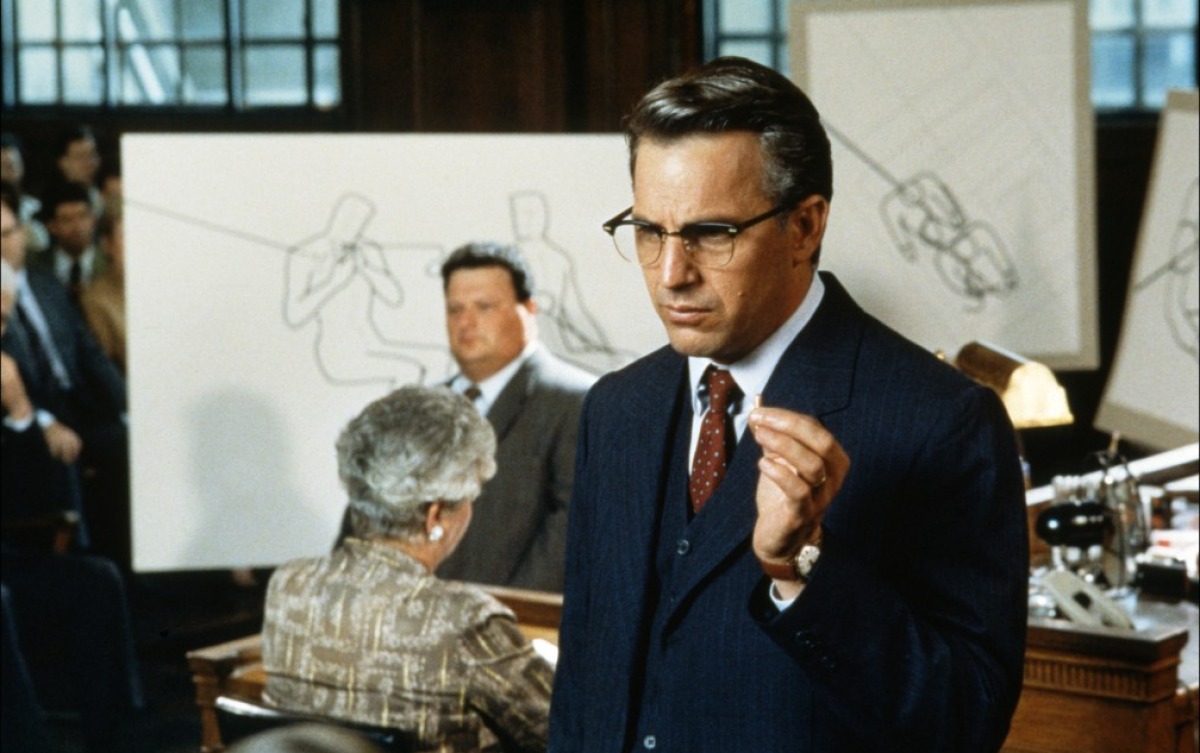
A film that can be seen over and over again not just as a great film with Stone at the height of his career, but to actually know what happened during the assassination of John Fitzgerald Kennedy. A film that, after it came out in 1991, spurred the President John F. Kennedy Assassination Records Collection Act of 1992 to pass so records were stored away until 2029.
The film is based off a couple of books, specifically one of Costner’s character Jim Garrison. In composing the film, Stone used a recreation of black-and-white archival footage from several different viewpoints to increase the mystery of the case.
As the film runs over three hours and had gathered information from a plethora of sources and filmed the same way, it might just be the quintessential case of an unresolved assassination. It truly makes us look at history with a different viewpoint such as agencies, individual persons, and history itself as it gets further away from the case.
It is rare for a fictional film, regardless the way it is presented, to make a bold case for what actually happened. The film can be seen as an inspiration for “Zodiac,” such as we truly never know what happened, but the facts were presented to us in the most unfiltered way in the film language.
9. Judgment at Nuremberg (1961) – Stanley Kramer
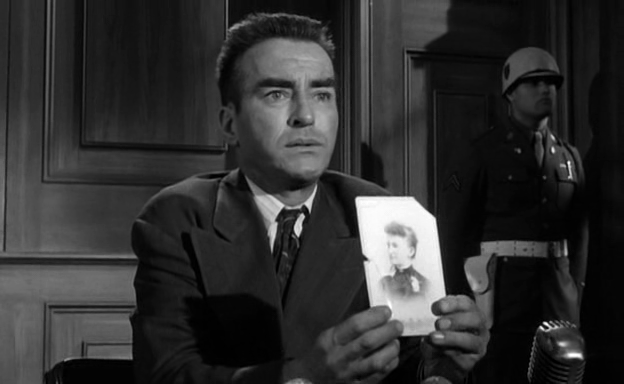
Though set only after 13 years from the original events, this film, produced and directed by Stanley Kramer, is almost a perfect time capsule of the events that occurred after World War II.
Composed of English and German actors and creatively using a technique where the audience understands all that goes on, while the real-life people in the film do not, we see the trials of several individuals for atrocities committed under the Nazi regime. Despite being fresh in the memory of the audience back in 1961 and even today, we are clearly presented facts from the trial, even though the film was adapted from Abby Mann’s stage play.
It actively includes the audience because all questions are moral, obedient, ethical, and relevant. It allows for us to actually ask ourselves, what would we have done under those same circumstances? It truly makes us look at things from a different viewpoint instead of a strictly non-fictional or fictional storytelling approach. Kramer was no stranger to real-life cases, directly, coming off of “Inherit the Wind,” so he knew what to include and how to do it.
The films still holds up as a courtroom drama with no crazy truth reveals or explosive performances, but great actors playing real-life people or a composite of people to tell a story of horrifying truth and history.
10. Gandhi (1982) – Richard Attenborough
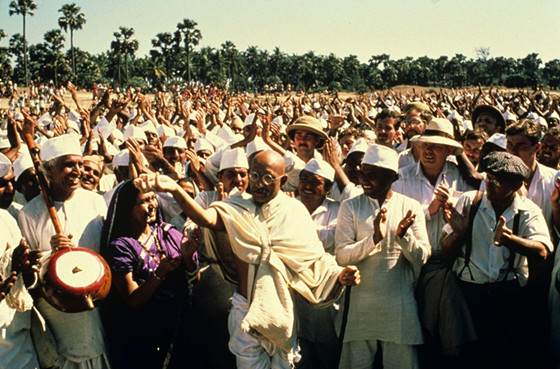
The British colonial rule over India has been depicted through 1930s serial B-movies or anti-apartheid movements, but none so close to Attenborough’s depiction of Sir Ben Kingsley’s “Gandhi.” We see more than three hours of Gandhi as a real man with true emotions and experiences to the human condition, instead of the picture-perfect pictorial man we seem to have known.
From his early beginnings to his eventual murder, we see his human dealings and use of nonviolence to rid India of the British. As one would think or stereotype in a way that he was just a quiet old man who asked nicely, guess again.
Of course, using nonviolence, he did not go quietly into that good night and changed the course of history. He firmly stood his ground, gave rousing speeches and encountered millions that continued his work, not only in India, but around the world.
Attenborough creates a large canvas where quite a bit happens surrounding the ruling of the British Empire with a stellar cast; however, the anchor of the film is obviously Kingsley in his first leading role. Without him, we would never see everything that occurred much to this physically small man, but a large-willed man much like the film itself.